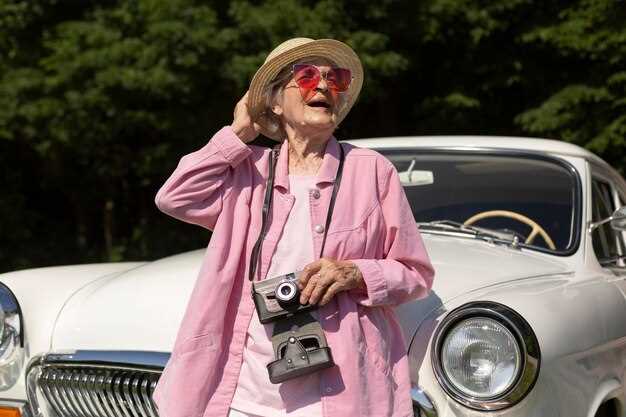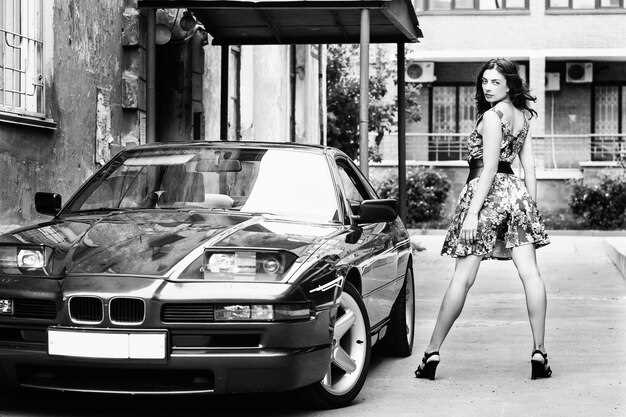
For automotive enthusiasts and photographers alike, capturing the essence of a Porsche is an art form that combines skill, passion, and an understanding of the car’s unique characteristics. The Porsche brand is synonymous with performance and elegance, making it essential for photographers to employ classic techniques that truly highlight these attributes. From selecting the right angles to mastering lighting, each aspect plays a crucial role in transforming an ordinary image into a stunning portrayal of this iconic vehicle.
As you delve into the world of Porsche photography, it becomes evident that the interplay between car and environment is pivotal. The ideal location can enhance the car’s lines and colors, while the right time of day can dramatically influence the mood of your shots. Whether you’re capturing a classic model or a contemporary marvel, understanding how to showcase the car against diverse backdrops will elevate your photography to new heights.
This article aims to equip you with essential techniques and tips that will not only improve your skills but also inspire you to capture the timeless beauty of Porsche cars. By mastering these classic photography techniques, you will be able to create compelling images that resonate with both fans of the brand and fellow photographers alike.
Choosing the Right Location for Stunning Porsche Shots
When it comes to Porsche photography, selecting the right location is crucial for capturing the essence of these iconic cars. The backdrop can enhance the car’s design, influence the mood of the photos, and even tell a story about the vehicle’s performance and heritage.
First, consider the theme you wish to convey. Urban settings offer a modern, dynamic feel, perfect for showcasing the sleek lines of a Porsche against cityscapes and architecture. Look for locations with interesting textures, such as graffiti-covered walls or sleek glass buildings, to create striking contrasts in your photos.
Alternatively, natural environments provide a stunning contrast to the polished surfaces of a sports car. Scenic roads, lush forests, or coastal highways can create breathtaking compositions that highlight the car’s agility and elegance. Early morning or late afternoon light enhances the visual appeal of your shots, casting soft shadows and rich colors on both the vehicle and the landscape.
Additionally, consider the accessibility of your chosen spot. Ensure you can safely park the car and have room to maneuver for different angles and perspectives. Locations should ideally be free from distractions, allowing the viewer to focus on the car’s features without unwanted background elements.
Another important aspect is the weather. Overcast days can provide soft, diffused light that reduces harsh shadows, whereas bright sunny days might showcase the car’s color saturation. Be prepared to adapt your shooting style based on the lighting conditions for the best possible results in your photography.
Ultimately, the right location is where the essence of the Porsche is most beautifully captured, revealing its character and performance through your photography. Spend time scouting locations to find the perfect backdrop that resonates with the spirit of the car, ensuring that your photos not only depict the vehicle but also communicate a deeper connection to the journey it represents.
Lighting Techniques to Enhance Classic Porsche Features

When photographing classic Porsche cars, lighting plays a crucial role in showcasing their timeless design and intricate details. Efficient use of light can bring out the elegance of curves, highlight paint finishes, and emphasize iconic styling features. Here are some essential lighting techniques to enhance the visual appeal of your classic Porsche photography.
Natural light can be your best ally. The golden hour–shortly after sunrise or before sunset–provides soft, warm light that enhances the contours of the car without harsh shadows. Positioning the Porsche in a way that captures this light can result in stunning, dramatic images. Consider using a reflectors to bounce light back onto the car, filling in any shadows while maintaining the natural look.
When shooting during midday, stronger overhead sunlight can create overpowering contrasts. To mitigate this, use diffusers to soften the light and reduce harsh highlights. Placing the Porsche in shaded areas allows for more even lighting, reducing glare and allowing colors to be more vividly captured. This technique is particularly effective for capturing the rich hues of classic Porsche finishes.
For indoor shoots or controlled environments, artificial lighting provides versatility. Softboxes can simulate natural light, providing soft and even illumination. Experimenting with multiple light sources allows the photographer to highlight specific features, such as the sleek silhouette or distinctive grilles of the Porsche. Adjusting the angle of light can create dynamic shadows that add depth and intrigue to the composition.
Backlighting is another effective technique that can create striking images. By positioning the light source behind the Porsche, you can achieve a beautiful halo effect around the edges, enhancing the car’s shape and creating an ethereal quality. This technique works best with reflective surfaces, allowing the light to interact with the car’s contours.
Lastly, consider utilizing colored gels on your lights for creative effects. This can alter the mood and atmosphere of your images, introducing an artistic flair to the classic Porsche’s beauty. Experimenting with different colors can evoke specific emotions or complement the car’s design.
In summary, mastering lighting techniques is essential for capturing the essence of classic Porsche cars. By understanding and manipulating natural and artificial light, you can enhance the signature features of these iconic vehicles, resulting in captivating and timeless photography.
Post-Processing Tips for Showcasing Porsche Details

Post-processing is a crucial step in bringing your Porsche car photos to life. It allows you to enhance the intricate details that make these vehicles stand out. Start with adjusting the exposure to ensure that every curve and contour of the car is visible, highlighting its unique design elements.
Next, focus on contrast. Increasing contrast can help distinguish between the car’s shiny surfaces and its subtle textures. This is particularly effective for capturing the sleek lines of a Porsche, enhancing the dynamic look of the vehicle. Utilize the clarity and structure tools to fine-tune the details, bringing out the character of the wheels, grilles, and headlights.
Color grading is another powerful technique. Pay attention to the hues of the Porsche’s paint, adjusting saturation and vibrancy to reflect the true essence of the car. This not only helps in emphasizing the rich colors but also adds depth to your photos. You can also selectively desaturate certain elements of the background to draw more attention to the Porsche itself.
For a polished finish, use sharpening tools subtly to refine edges without creating noise. This ensures that the details, such as wheel spokes and badging, pop in your final images. Lastly, consider cropping your photos to focus on specific details, allowing viewers to appreciate the craftsmanship and engineering of Porsche vehicles even more.
 Skip to content
Skip to content




